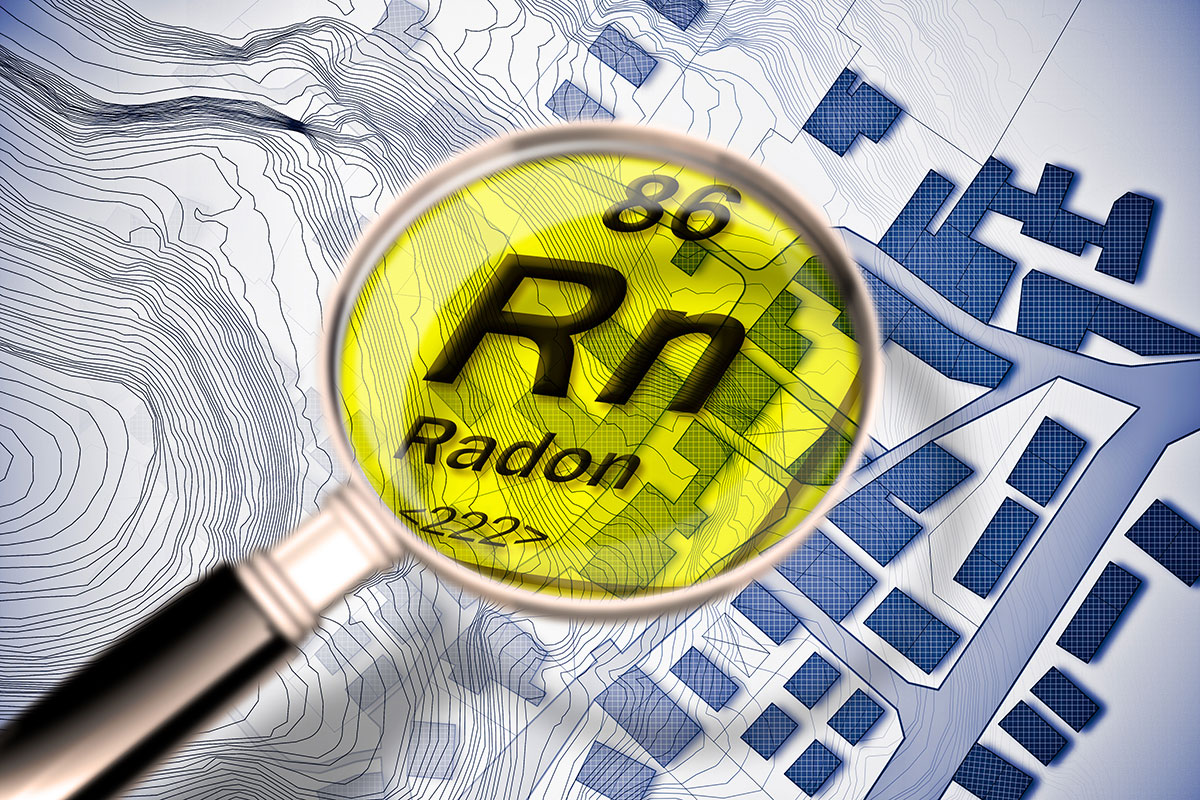The risk of radon
You can’t see it, and you can’t smell it, but radon is everywhere and could potentially cause harm to residents. Nicky Hutt, head of the radon services team at Public Health England, considers how social landlords can reduce the risk. Picture by Getty
In association with:

What is radon and why do social housing professionals need to know about it?
Each year, there are 1,100 deaths in the UK that are linked to radon. A colourless, odourless, radioactive gas, radon is formed by the radioactive decay of small amounts of uranium that occur naturally in all rocks and soils. Radon produces a radioactive dust in the air we breathe, which becomes trapped in our airways and emits radiation that damages our lungs. This damage, like that caused by smoking, increases our risk of lung cancer.
Radon is everywhere, both outside and indoors. In many areas, the indoor radon levels are low and the risk to health is small. But in others it’s higher and, as a social landlord, it is your responsibility to protect your tenants from this exposure and potential harm.
What are the regulatory requirements around managing the risk?
Under the Housing Act 2004, landlords have a duty of care to provide a safe home to their tenants. That includes protecting against radon, which is identified as a potential hazard in the government’s housing health and safety rating system.
It is also addressed as part of the Management of Health and Safety at Work Regulations 1999 and the Ionising Radiations Regulations 2017. Employers have a duty to protect their employees from radon, and so properties classified as workplaces also need to be considered.
“We recommend a four-stage process to managing the risk of radon in properties: check, measure, act, maintain”
How can housing associations and social landlords understand the risk in the properties they manage?
At Public Health England (PHE), we recommend a four-stage process to managing the risk of radon in properties: check, measure, act, maintain.
The checking stage involves conducting a risk assessment for radon in the properties your organisation manages. In the first instance, this just involves checking whether any of your buildings are located within a radon-affected area – these are classified as parts of the UK where the potential for high radon levels is greater than 1%.
Finding out whether any of your properties are in one of these areas is simple: PHE and the British Geological Survey have jointly published a map detailing exactly which parts of the UK are affected. There is a free version at www.ukradon.org. It is interactive, so you can search by location – county, town or postcode.
If your organisation has a large portfolio, with properties in diverse areas of the UK, PHE can undertake a postcode list assessment for you. That involves sending us a list of the postcodes in which each of your properties sit. We then analyse this and advise on the radon risk for each postcode.
What do housing associations and social landlords need to be doing to manage the risk?
If any properties in your portfolio are at potential risk of high levels of radon, then you need to undertake testing.
It’s worth remembering that a property in a radon-affected area does not necessarily have a radon problem. The only way to know the levels of radon in any given building is to undertake a validated three-month measurement – the ‘measure’ stage of the check, measure, act, maintain process.
What does radon testing involve?
Testing is easy to do. It involves placing small detectors in the property at roughly head height, leaving them in position for three months, and then returning them for processing. A standard domestic kit contains two detectors: one for the living area and one for the bedroom.
That said, the testing process can pose some logistical challenges if you are dealing with a large number of properties.
At PHE, we’ve supported many landlords with programmes that involve radon testing of large-scale portfolios. Our aim is always to tailor our measurement services to the needs of specific organisations and to find the most cost-effective way to proceed – that may include scheduling testing over multiple financial years.
“If any properties in your portfolio are at risk of high levels of radon, then you need to undertake testing”
What constitutes a radon level that needs to be addressed?
If testing shows a residential property has a radon level of 200 Bq m-3, or over 300 Bq m-3 for workplaces, then action is required to reduce the levels. That involves remedial work to improve the ventilation of the property, so helping disperse the radon.
Which method of remedial work is most appropriate will depend on the radon level and the property’s construction. At the simple end of the scale, it could involve cleaning out existing air bricks, or adding new ones. Alternatively there may need to be a fan running continuously.
Information on all methods can be found at www.ukradon.org. We would always recommend a re-test after remedial works have been installed to ensure works have been effective in reducing the radon level.
Are there examples of organisations which have already successfully taken action on identifying their radon risk?
We have worked with numerous councils and registered social landlords to undertake radon testing programmes over the past 30 years. Recently we worked with a large housing association that carried out a postcode list assessment on its full property portfolio. It has now started a measurement programme with PHE, testing properties and undertaking appropriate remedial works as needed.
What is the first thing housing associations and social landlords should do tomorrow to manage this risk?
Have a look on the UKradon website. There is a wealth of information on there but the most helpful starting point is probably the interactive map.
Search for the location in which you have properties. If a search shows as a non-radon-affected area, then that’s your risk assessment done – there’s no need to do anything else.
But if you find you have properties in any of the coloured squares, then drop us an email or give us a call to discuss your options.
Biography
Nicky Hutt has worked at Public Health England and its predecessors for 15 years. She currently heads up the radon services team, which handles around 10,000 radon measurements in homes and workplaces per year. The team also provides specialist advice to members of the public and customers on all aspects of radon.









